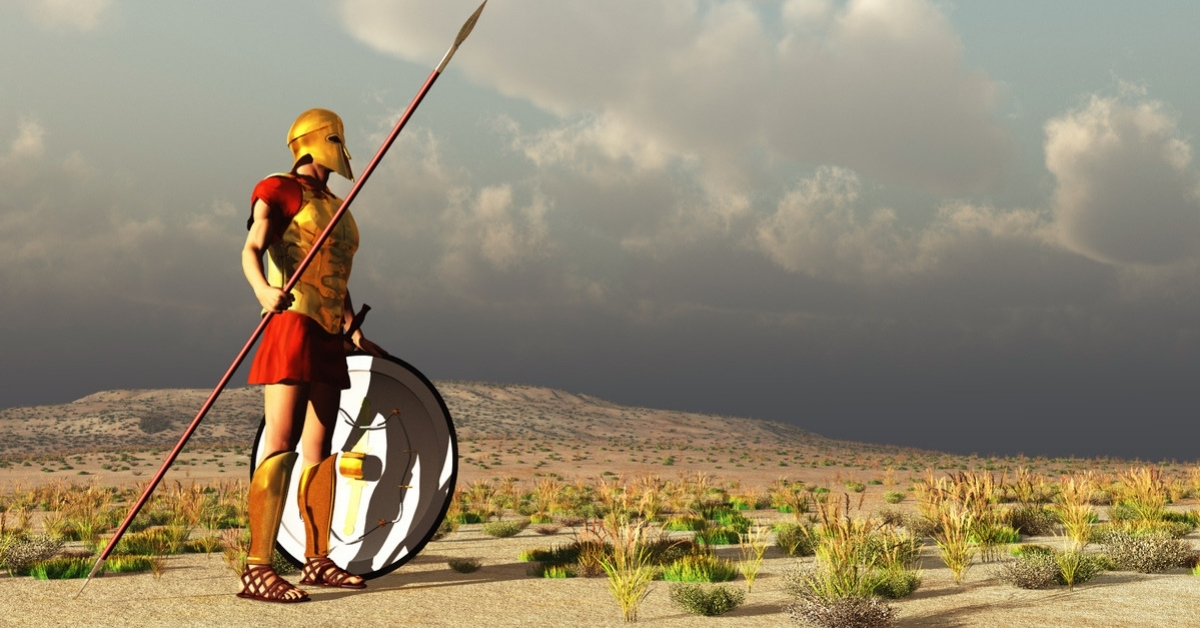For three days the rains had fallen steadily, but then the downpours ceased. So, riding through the mud with his lieutenants, he studies the enemy, formed in the distance along a line almost four miles in length, cavalry covering both flanks, armor glittering in the intermittent rays of the sun.
Fronting the cavalry, he notices chariots, perhaps as many as five hundred on each flank, and between the distant flanks war elephants, unmistakable from almost any distance. They defend the main battle line like a city of towers. How many are there? Two hundred? At least.
The elephants – well-trained and disciplined – are heavily armored, and on their backs carry boat-like structures in which archers and javelin throwers look down upon the earth’s mortals as if from the clouds, waiting now only the order to advance.
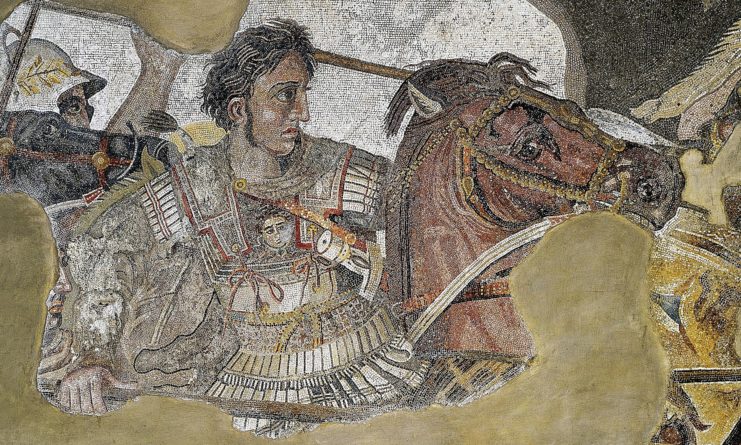
His officers’ point toward the enemy’s infantry posted behind the elephants, arrayed in splendor, steel helmets shimmering for as far as the eye can see, like a distant wave cresting the ocean. They are uniformed in glorious colors, variously armed with lances and maces and axes for hacking. He smiles; it is an impressive sight.
He is Alexander of Macedon, the great captain, perhaps the greatest military leader known to history. From a distance he takes in the enemy’s posting with the careful eye of the world’s leading warrior, gauging, searching for weakness, for imprecision, for that one vulnerable place where me might strike a lethal blow – the blow that has never failed him.
If he cannot determine outright that point of weakness, he will maneuver, forcing his enemy to respond, and then strike immediately and violently where weakness suddenly appears. At this, he is a master.
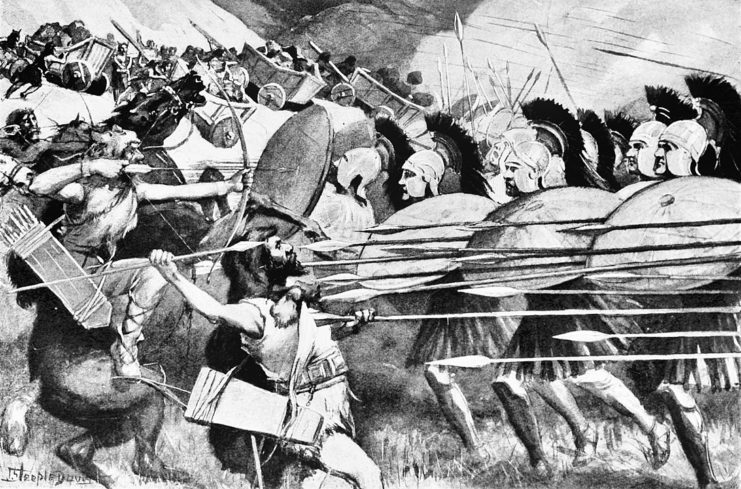
It is May, 326 BC, and Alexander has now been on campaign for eight long years, eight years in which he has led the most extraordinary and successful military campaign the world has ever seen. He has conquered the known world, destroying the Egyptians and Persians, along with sundry lesser known kingdoms along the way. Fighting in too many battles to count, Alexander has led from out front during every engagement, often wounded, but losing…not once.
Earlier that spring his vast army navigated the dreaded highlands and brutal cold of Turkestan and Afghanistan, descending the Hindu Kush, clamoring though the Khyber Pass into the lowlands of India, a landscape so mysterious and unknown to the Greeks it may as well have been the valleys and mountains of the moon.
While Alexander has conquered the known world, that conquest appears entirely insufficient to satiate his predatory lust, so he has pushed on, and on…and on. As Peter Green, his biographer, notes, “There was no predictable limit to his ambitions, only a constantly receding horizon ad infinitum. What he intended now was (in the most literal sense) a march to the world’s end.”
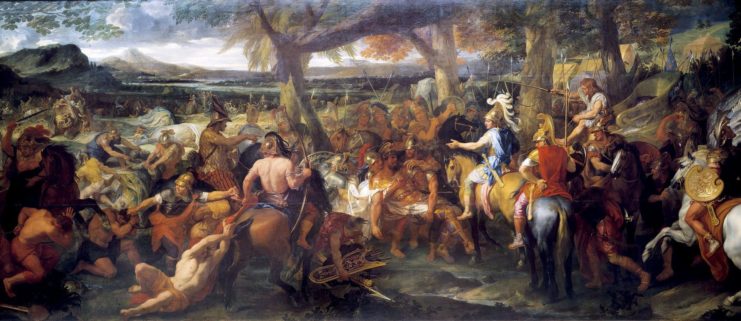
To accomplish this march to the earth’s outermost limit, Alexander has at his disposal the finest military machine of its age. At once professional and sophisticated, it is an army capable of adjusting to virtually any potential threat. Composing the order of battle are archers, dart throwers, light cavalry, slingers, heavy cavalry, and javelin throwers.
His siege train consists of lightweight catapults which, like modern artillery, can be rapidly broken-down then reassembled in the field by his engineers at a moment’s notice. There are also battering rams and portable siege towers, enough to destroy any fortification or scale any wall.
But the heart of Alexander’s army, the one element that time-and-again has proven invincible, is his infantry. Designated “Foot Companions,” the infantry is composed of hoplites, highly trained and highly motivated individuals drawn from the middle and upper classes of Greek society. Armed with a shield and short sword for hand-to-hand combat, the hoplites’ principal weapon is the sarissa, a heavy lance 14 feet in length, developed years before by King Philip, Alexander’s father
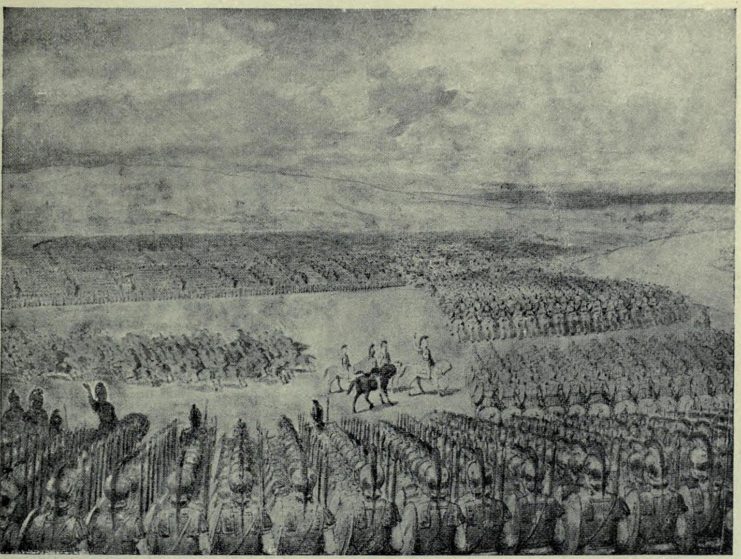
Effectively trained to fight with the sarissa from within the ranks of the famed Macedonian phalanx, a block formation sixteen rows deep and sixteen men wide, the Foot Companions have, almost like a modern tank, overwhelmed every infantry opponent they have faced during the campaign. Moreover, because the sarissa holds the enemy at a distance, Alexander’s phalanx has been able to virtually slaughter its opponents, while suffering very few casualties of their own. As a result, their victories have been masterfully executed, decidedly violent, and frighteningly lethal.
While Alexander has led with dash, courage, and unrivaled martial acumen, his army has also outclassed every opponent he has faced – an advantage that is by no means inconsiderable.
Indeed, so advanced is Alexander’s army and organization that military historian Trevor Dupuy, writes: “Careful organization and training programs welded the mass into a military machine which, under the personal command of Philip and later Alexander, probably could have been successful against any other army raised during the next eighteen centuries; in other words, until gunpowder weapons become predominant.” Under Alexander’s command, they have been, quite literally, invincible.
It is this uniquely superior force that Alexander has led down the Hindu Kush into India where, on the opposite bank of the Hydaspes River (today’s Jhelum River in the Punjab region of modern Pakistan), King Porus, master of the Paurava Kingdom, has positioned his massive army in an act of defiance.
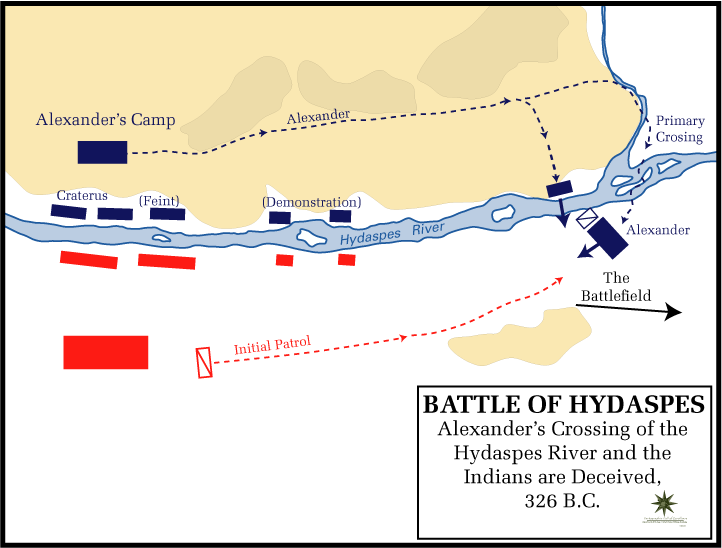
Porus has refused to bow to Alexander’s demand for subjugation, preferring to fight rather than submit. But to continue east – as Alexander desires – he must march through the Paurava Kingdom, thus by the logic of the day, Porus and his colorfully attired military must be dispatched.
Porus waits along the banks of the swollen river, determined to instantly annihilate any attempt by Alexander to crossover. Nature has thus far frustrated Alexander, but he is nothing if not an energetic, creative, and relentless man.
For weeks Alexander sought passage across the river – surging now with snowmelt and monsoon rains – as Porus dogged his every move from the opposite bank. Using a range of deceptive techniques, he finally located a usable ford about 18 miles upriver. Leaving behind a small body of troops for display under his top general, Craterus, Alexander forded the river at night with the bulk of his infantry (perhaps 30,000) and 5,000 of his Companion Cavalry amidst the cracking thunder and lightning strikes of a severe storm.
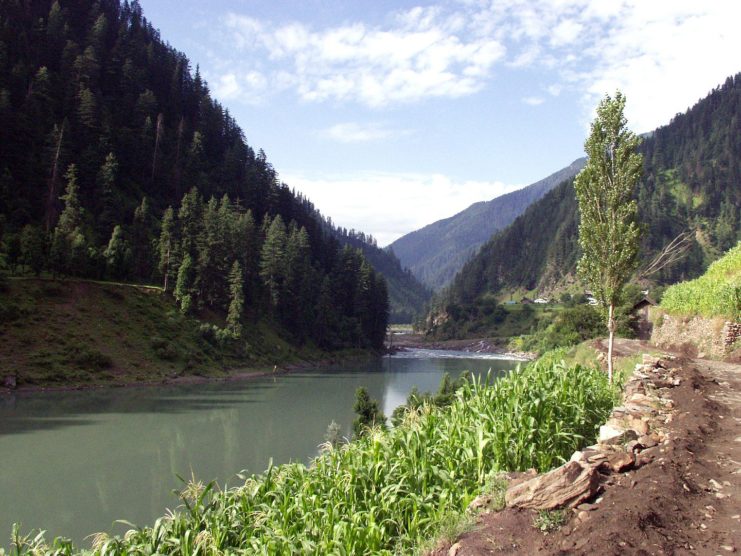
Meanwhile, Craterus actively demonstrated downriver across from the enemy’s main camp, holding Porus’s army in place. The ruse worked, and before Porus grasped what had happened, Alexander had crossed with his entire force.
Porus responded by sending his son with a contingent of cavalry and charioteers to confront the threat, but this was easily brushed aside by Alexander. Porus’s son was killed in sharp fighting, left behind in the mud and mire as Alexander drove relentlessly forward.
Marching hard, it was not long before the Macedonians discovered the main body of the Pauravan army – cavalry, charioteers, infantry, and war elephants, arrayed for battle, blocking their route east. No precise estimates of strength are available for us today, but a reasonable figure would put Porus’s total manpower at somewhere around 75,000.
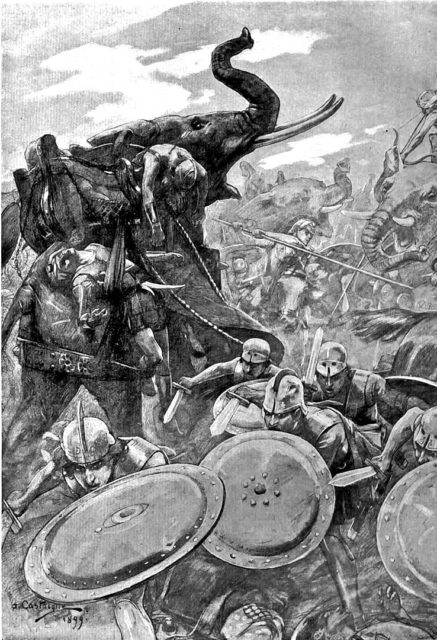
Alexander rested his men as he studied the Pauravan army from afar, this as Craterus forded the river with the remainder, consolidating the Macedonians along the riverbank, perhaps 50,000 strong. Then, when all was at last in place, Alexander divided his cavalry, one portion under Coenus, while he led the other portion against Porus’s left flank himself.
Alexander’s Companion Cavalry promptly drove through Porus’s charioteers – stymied in the mud, as they were — and began routing his cavalry. Sensing danger on his left, Porus ordered the cavalry from his right wing across his front to reinforce his collapsing left flank.
This movement opened the very weakness the Macedonians had always sought and exploited. Coenus did not disappoint, immediately leading his cavalry against the newly exposed Pauravan right and rear.
Meanwhile, Porus ordered his elephants and infantry to advance upon Alexander’s center. Never having faced such a terrifying test before, it was unclear how the Macedonians would respond. The elephants thundered forward, bellowing terribly as Pauravan archers unleashed thousands of arrows into the phalanxes arrayed ahead.
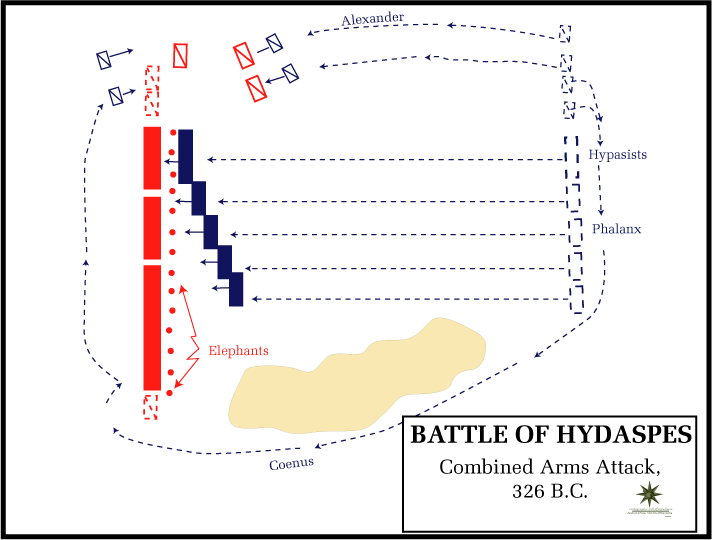
At first the Macedonian infantry likewise advanced to meet the enemy, attacking the elephants with their sarissas, enraging the beasts, and sewing confusion in the Pauravan ranks. Then they began to slowly back away, forcing the elephants to follow, confusing and exhausting the beasts as they lumbered forward in pursuit.
Then the long phalanx line advanced once more, striking the center of Porus’s line with venom, meeting the already crazed elephants in a scene best imagined from hell. Spearing and hacking at the raging beasts, the Macedonians fought wildly, as they themselves were gored and lifted and hurled and trampled and mashed into the earth.
The Greeks nevertheless stormed forward in a contest of almost unimaginable horror and gore. Men and beast bellowed in raging violence as blood flew, sarissas sliced the air, and death, in high carnival, ruled the afternoon.
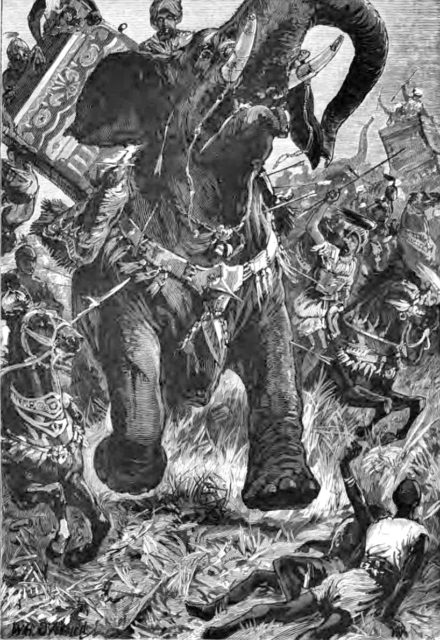
Eventually the elephants, exhausted and frantic, gave way, turning to run from the flashing spears and swords. The Macedonians, sensing victory, pressed ever forward. The immense beasts, frightened into a panic, began to trample their own infantry, turning the scene into one of utter chaos.
The Pauravan battle line, now beset front, flank, and rear, began to melt away. Meanwhile, the Macedonians continued their frenzied pursuit and, in an orgy of bloodletting, slaughtered the outmatched Indians by the thousands. Soon it was over, Porus wounded, his army routed, fleeing the field in a panicked storm.
Casualty estimates are, of course, best guesses today, but those guesses suggest that Pauravan losses were staggering: 3,000 cavalrymen killed, chariot force annihilated, as many as 90 battle elephants killed, 30,000 infantrymen slaughtered, another 3,000 taken prisoner.
Historical accounts imply the Macedonians suffered as many as 1,000 dead in this ghastly combat; one of the highest casualty-counts ever suffered by Alexander’s army.
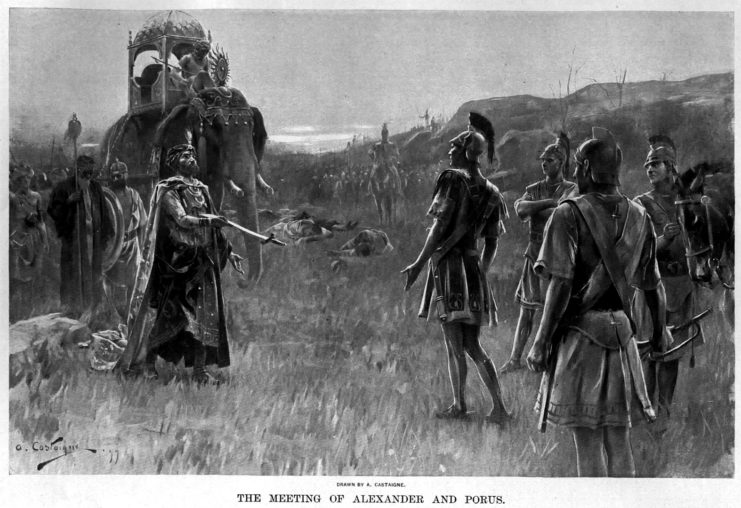
Alexander, impressed by Porus’s stand and courage in combat, spared his life and allowed him to remain in command of that section of Alexander’s ever-expanding empire. For Alexander, the road east had now been secured, the path to infinite conquest he so desires forced wide open by this, his most recent victory.
But his hoplites will have none of it. For them, the bloody, brutal, freakish charge against the raging war elephants seems to have been the last straw. They did not mutiny, but they refused to go further, demanding that the army – now eight long, tiring, bloody years on the road – turn-about, and begin the long trek back to Macedonia.
The towering Himalaya Mountains, now visible, beckon Alexander eastward, but the hoplites will not budge. So, the army turns, and begins the trek back from whence it came, a tale as fraught with danger, courage, blood, and battle as the one that brought the Greeks out of Asia Minor in the first place.
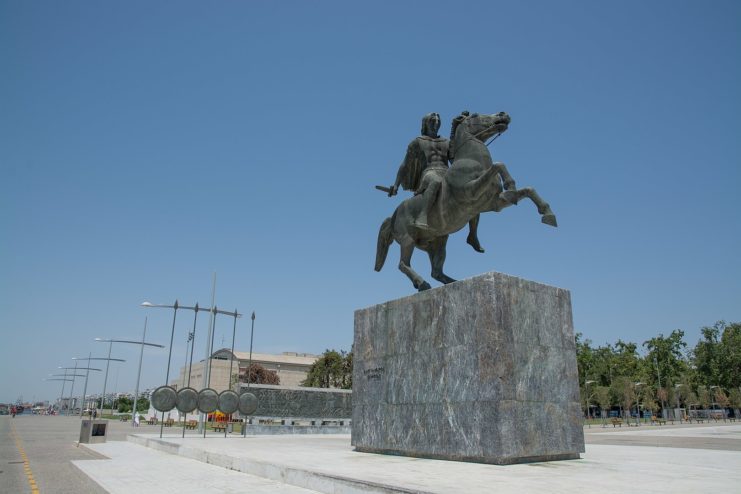
The Battle on the Hydaspes marks Alexander’s last great victory, one of his four victories now considered masterpieces, this due to his inspired, stealthy crossing of a river at flood-stage, and victory over a substantially larger foe.
The Macedonians return to Babylon where Alexander – now drunk on wine, power, and a pathologically inflated ego – rules with an iron fist for seven brutal years. Then, on June 10, 323 B.C. he dies of unknown causes, perhaps illness, perhaps poison at the hand of an assassin.
Another Article From Us: Remains of Missing Marine from WWII Returning Home for Burial
The great Alexander, the most prolific conqueror of all time, lay dead at the age of only 32. Very soon his empire will split, crumble, and return to dust. The location of his tomb remains a mystery to this day.
By Jim Stempel
Jim Stempel is the author of numerous articles and eight books on American history, spirituality, and warfare. These include The Battle of Glendale: The Day the South Nearly Won the Civil War, and his most recent, American Hannibal: The Extraordinary Account of Revolutionary War Hero Daniel Morgan at the Battle of Cowpens. For a full list of his books please go to: amazon.com/author/jimstempel
